Did you know? |
There are specialized oscilloscopes available for power measurements featuring up to 8 voltage and current channels (direct high voltage and current input). Read more...
Latest Oscilloscope News |
Software Option to increase vertical Oscilloscope Resolution to 16-bit
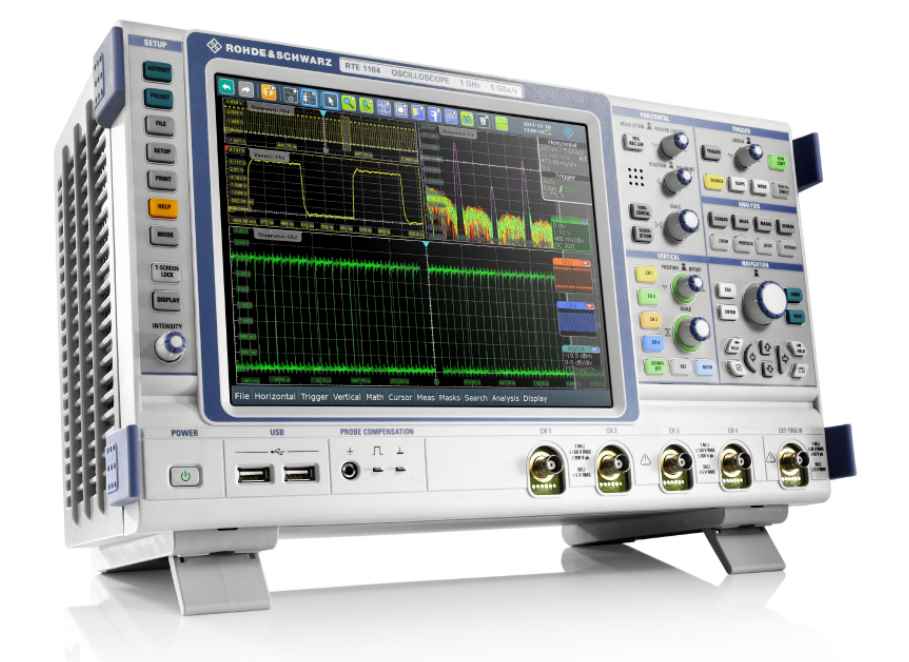 07 November 2014 - With the high definition (HD) mode Rohde & Schwarz increases the vertical resolution of the R&S RTO and R&S RTE oscilloscopes to up to 16 bits - a 256-fold improvement over 8-bit resolution. Waveforms are sharper and show signal details that would otherwise be masked by noise. Users benefit from even more precise analysis results.
07 November 2014 - With the high definition (HD) mode Rohde & Schwarz increases the vertical resolution of the R&S RTO and R&S RTE oscilloscopes to up to 16 bits - a 256-fold improvement over 8-bit resolution. Waveforms are sharper and show signal details that would otherwise be masked by noise. Users benefit from even more precise analysis results.
Oscilloscope Probes for High-Voltage Signal Measurements
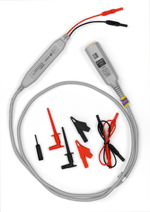 05 November 2014 – Keysight Technologies introduced 200-, 300- and 500-MHz, high-voltage probing solutions with a wider input range, higher common-mode rejection ratio and optimized accessories. The probes are ideal for testing today’s switching power supplies or power devices and for measuring motor drives and vehicle buses.
05 November 2014 – Keysight Technologies introduced 200-, 300- and 500-MHz, high-voltage probing solutions with a wider input range, higher common-mode rejection ratio and optimized accessories. The probes are ideal for testing today’s switching power supplies or power devices and for measuring motor drives and vehicle buses.
Oscilloscopes - Overview Products and Suppliers
The following list shows which oscilloscope manufacturer supplies which kind of instruments. The frequency in the header specifies the maximum bandwidth. In this list we considered only manufacturers offering scopes with a bandwidth of more than 100 MHz. In case of USB, PXI/PXIe, and LXI we regarded only instruments which are explicitly specified as oscilloscope. There are many other instruments available which are specified as digitizer oder data acquisition modules and might be suitable for some applications.
Please note that you may be redirected to external websites when clicking on links.
4 Channel 20 GHz Sampling Oscilloscope
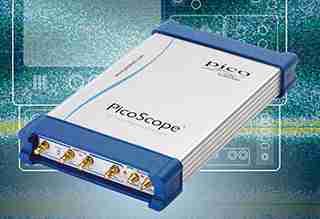 22 October 2014 - With the new PicoScope 9341 20 GHz Sampling Oscilloscope, engineers can analyze two differential or four single-ended high-speed signals. The instrument is ideal for measuring skew and crosstalk between differential pairs on serial buses such as HDMI, SATA and PCIe, and for testing signal integrity at differential and single-ended transceiver ports. Data rates up to 40 Gb/s can be viewed, with 5th-harmonic characterization possible up to 8 Gb/s.
22 October 2014 - With the new PicoScope 9341 20 GHz Sampling Oscilloscope, engineers can analyze two differential or four single-ended high-speed signals. The instrument is ideal for measuring skew and crosstalk between differential pairs on serial buses such as HDMI, SATA and PCIe, and for testing signal integrity at differential and single-ended transceiver ports. Data rates up to 40 Gb/s can be viewed, with 5th-harmonic characterization possible up to 8 Gb/s.
USB-connected Mixed-Signal Oscilloscopes
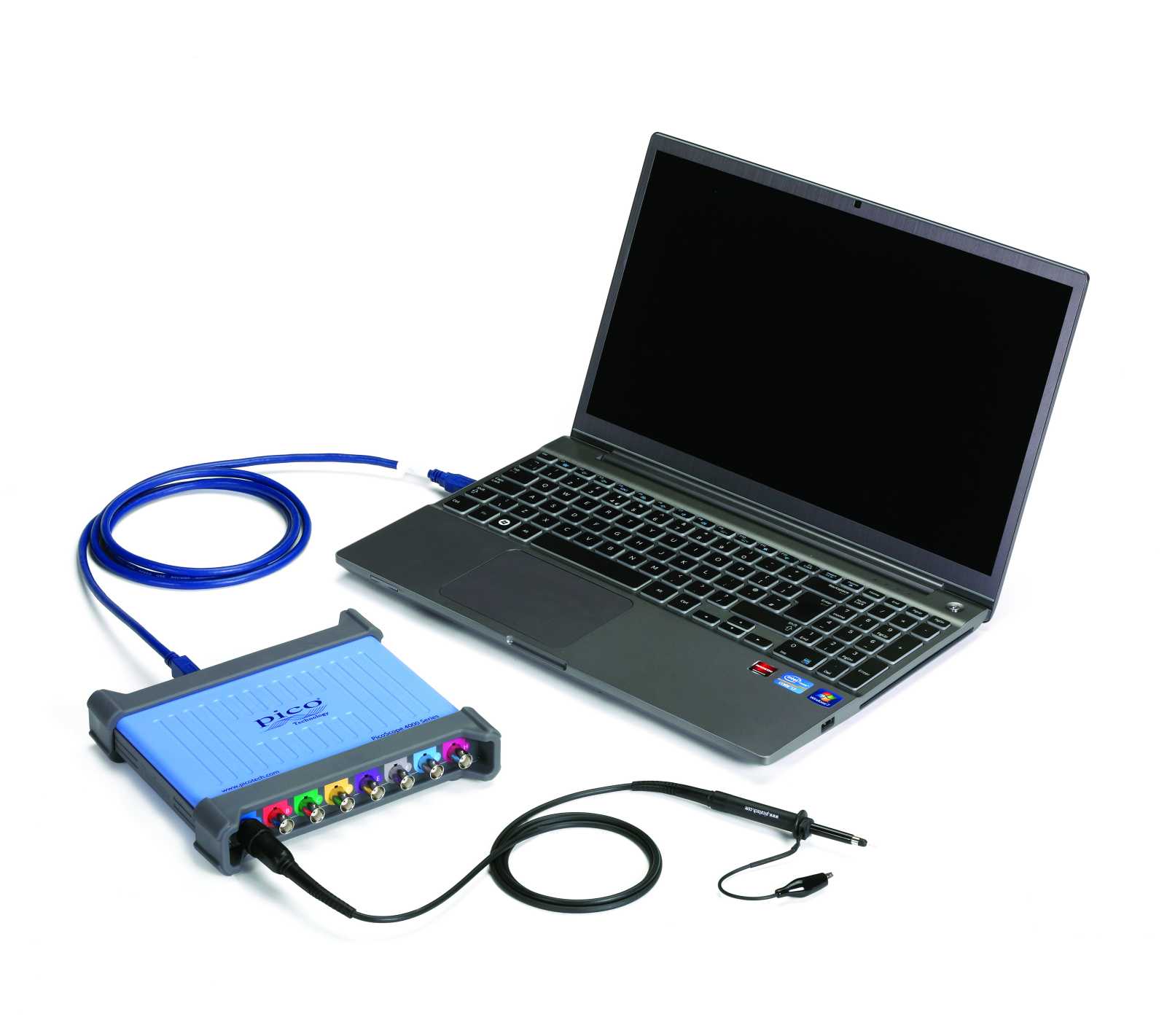 15 October 2014 - The new PicoScope 3000D Series Mixed-Signal Oscilloscopes (MSOs) form a complete portable test system, with two or four analog channels and sixteen digital channels as well as a built-in arbitrary waveform generator. The PicoScope 3000D Series MSOs are available with analog bandwidths from 60 MHz to 200 MHz. Maximum digital input frequency is 100 MHz, equivalent to a data rate of 200 Mb/s (5 ns pulse width) on each channel.
15 October 2014 - The new PicoScope 3000D Series Mixed-Signal Oscilloscopes (MSOs) form a complete portable test system, with two or four analog channels and sixteen digital channels as well as a built-in arbitrary waveform generator. The PicoScope 3000D Series MSOs are available with analog bandwidths from 60 MHz to 200 MHz. Maximum digital input frequency is 100 MHz, equivalent to a data rate of 200 Mb/s (5 ns pulse width) on each channel.
Teledyne LeCroy introduced new 1 GHz, 10 GS/s Oscilloscope
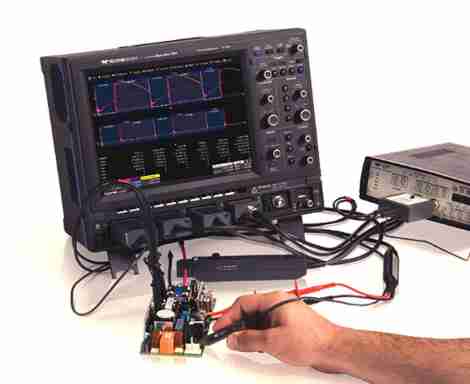 14 October 2014 - Teledyne LeCroy introduced the WaveSurfer 10 oscilloscope with 1 GHz and 10 GS/s at €9,990/£8,640. The WaveSurfer 10 combines the MAUI advanced user interface with powerful waveform processing, in addition to advanced math, measurement and debug tools, to quickly analyze and find the root cause of problems.
14 October 2014 - Teledyne LeCroy introduced the WaveSurfer 10 oscilloscope with 1 GHz and 10 GS/s at €9,990/£8,640. The WaveSurfer 10 combines the MAUI advanced user interface with powerful waveform processing, in addition to advanced math, measurement and debug tools, to quickly analyze and find the root cause of problems.
Testing USB Interfaces with an Oscilloscope
 10 October 2014 - Developing USB-capable devices and integrating their interfaces requires reliable, fast and easy-to-operate test solutions. The R&S RTO-K60 triggering and decoding option addresses this need for USB 1.0/1.1 and 2.0 as well as for the high-speed interchip (HSIC) version. This option together with the R&S RTO-K21 compliance test software and the R&S RTO-ZF1 test fixture set from Rohde & Schwarz is the ideal tool for developers who have to integrate USB interfaces.
10 October 2014 - Developing USB-capable devices and integrating their interfaces requires reliable, fast and easy-to-operate test solutions. The R&S RTO-K60 triggering and decoding option addresses this need for USB 1.0/1.1 and 2.0 as well as for the high-speed interchip (HSIC) version. This option together with the R&S RTO-K21 compliance test software and the R&S RTO-ZF1 test fixture set from Rohde & Schwarz is the ideal tool for developers who have to integrate USB interfaces.
Oscilloscope Basics |
A Comparison between Oscilloscopes and Spectrum Analyzers
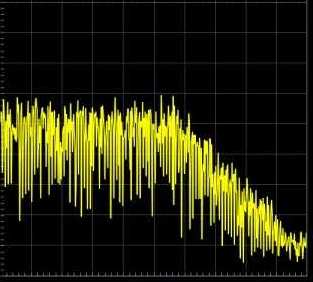 Whether it is for a land survey searching for minerals on Earth, or for a space exploration in search of alien life forms, the analysis of any signal boils down to looking at its time and frequency information. While an oscilloscope displays a signal with respect to time, a spectrum analyzer shows it with respect to frequency. Both of these tools are very important in any signal analysis application. This article explains the difference between oscilloscope and spectrum analyzer using examples.
Whether it is for a land survey searching for minerals on Earth, or for a space exploration in search of alien life forms, the analysis of any signal boils down to looking at its time and frequency information. While an oscilloscope displays a signal with respect to time, a spectrum analyzer shows it with respect to frequency. Both of these tools are very important in any signal analysis application. This article explains the difference between oscilloscope and spectrum analyzer using examples.
Oscilloscope Background |
Digital Debugging - better using a Mixed-Signal-Oscilloscope or a Logic Analyzer?
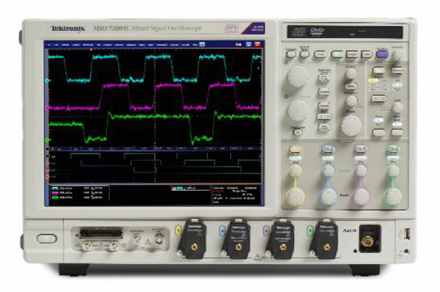 Today’s technology is fundamentally balanced on an increasingly fine line between the analogue and digital domains; as data speeds increase — both within and between devices — the ‘ideal world’ of fast, clean digital transitions becomes evermore difficult to achieve. This presents new and escalating challenges when verifying faster digital signals that exhibit more and more analogue-like features. As a result it is becoming necessary to remove the hard line between digital and analogue.
Today’s technology is fundamentally balanced on an increasingly fine line between the analogue and digital domains; as data speeds increase — both within and between devices — the ‘ideal world’ of fast, clean digital transitions becomes evermore difficult to achieve. This presents new and escalating challenges when verifying faster digital signals that exhibit more and more analogue-like features. As a result it is becoming necessary to remove the hard line between digital and analogue.

 How to resolve AdBlock issue?
How to resolve AdBlock issue?